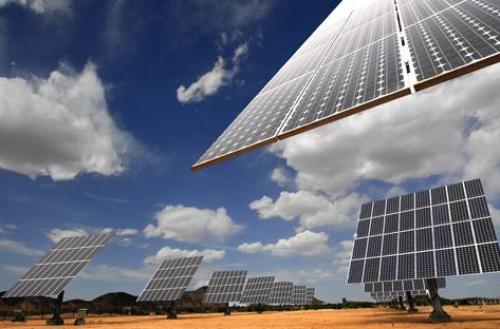
Domestic enterprises are weak in competitiveness
Sun Guangbin, secretary-general of the Solar Photovoltaic Product Branch of the China Chamber of Commerce for Import and Export of Mechanical and Electrical Products, said at the IntersolarChina2014 conference that in 2013, the pattern of China's photovoltaic products exports changed. The proportion of traditional markets declined while the proportion of emerging markets increased. Asia became the largest export market.
Sun Guangbin’s statistical report on photovoltaic product export markets shows that in 2013, the proportion of China’s PV industry’s once largest overseas market’s exports to Europe dropped from about 70% at the peak to 30.26%. Instead, the Asian market replaced it with an export ratio of 44.78. %. Among them, Japan accounts for 25%, and is the largest exporter of photovoltaic products in China. In January-February 2014, the Asian market accounted for 52% of exports, of which Japan accounted for 34%, still the largest exporter of photovoltaic products in China, and the European market accounted for 22%. Overall, the trend continued last year.
Sun Guangbin said that from the perspective of trade methods, in 2013, the general trade mode of PV products exported 41.03%, and the processing trade mode exported 53.33%. The low proportion of general trade shows that the competitiveness of domestic PV manufacturing companies is still weak, and exports will remain unstable in the future.
According to Li Junfeng, director of the Renewable Energy Professional Committee of the China Resources Comprehensive Utilization Association, the Japanese market and the Indian market will be the better PV market within 3-5 years or even within 10 years.
Domestic distributed photovoltaic problems
According to the indicators issued by the National Energy Administration, China's distributed PV will reach 8 GW this year, which is more than that of the independent PV power station (6 GW). In the industry's view, the domestic market, Europe and the United States market, emerging markets will each consume 1/3 of China's photovoltaic products.
Jing Kang Energy Co., Ltd. CEO Chen Kangping told reporters that the current distribution of photovoltaic power subsidies from the original "Golden Sun" installed subsidies to distributed generation subsidies, as an independent business, self-financing business, must seek market funding support However, most banks are not optimistic about the current policy and status quo. In his view, the development of distributed photovoltaic power generation still faces many problems to be solved, such as financing difficulties, the collection of electricity charges for multiple owners, the shortage of efficient rooftop resources, and the lack of stable expected returns.
"According to the general experience, distributed generation projects companies must bear at least 20% of the start-up capital, nearly 80% of the funds need market financing support, and most banks have a wait-and-see attitude towards distributed photovoltaic power generation," said Chen Kangping.
Wang Sicheng, a researcher at the Energy Research Institute of the National Development and Reform Commission, summarized the current problems of distributed photovoltaics as low yield, difficulty finding roofs, financing difficulties, transaction risks, grid support, difficulty in filing, and long-term stability of loads.
Talking about the 8 GW of distributed photovoltaic targets, Li Junfeng stated that it is difficult to achieve the goals. “The key to solving the financing difficulties lies in the fact that distributed photovoltaic projects must be profitable.â€
Li Junfeng believes that cracking the bottleneck of current distributed photovoltaics, the grid can play a key role. "Especially in terms of cash flow, we need to use the grid to ensure its transparency in cash flow. At present, for the banks, the transparency of cash flow alone is not enough."
Overcapacity still exists
At the IntersolarChina2014 seminar, a photovoltaic company official stated that most of China's photovoltaic manufacturing companies adopt the mode of low-profit expansion, but this model is difficult to last, and the risks have begun to appear.
Li Junfeng believes that companies must have sufficient profit margins to ensure innovation investment. Micro profit can temporarily win the market, but in the end it is likely to be eliminated. In his view, low-price competition is a manifestation of the extremely incompetent Chinese equipment manufacturing industry. "The end result is that the best products have a market. Just like cars, the best car to sell is the best car, not the cheapest car. Power equipment should also be the case. The most marketable is the quality. Good equipment, not the cheapest equipment. At first you may have occupied the market, but in the end you will be eliminated by the market."
In response to the problem of excess capacity of photovoltaics, Li Junfeng stated that the power equipment is a product with strong homogeneity. There are about 3-5 production companies, and the number of such products is not more than 10, and the current number of domestic enterprises Far larger than this number, mergers and reorganizations are still needed to a large extent.
Children or Kids headphones are specially designed for children over 3 years old. The biggest difference from ordinary headphones is hearing protection. The maximum decibel value is limited to 85dB.
Advantages:
1. Protect children's hearing, 85dB maximum volume.
2. Strange style, including a variety of cartoon design.
3. The color is bright and cool, and it is very popular among children.
4. Comfortable to wear.

Wireless Earphones,Kids Earphones,Childrens Headphones,Kids Wireless Headphones
Shenzhen Linx Technology Co., Ltd. , https://www.linxheadphone.com